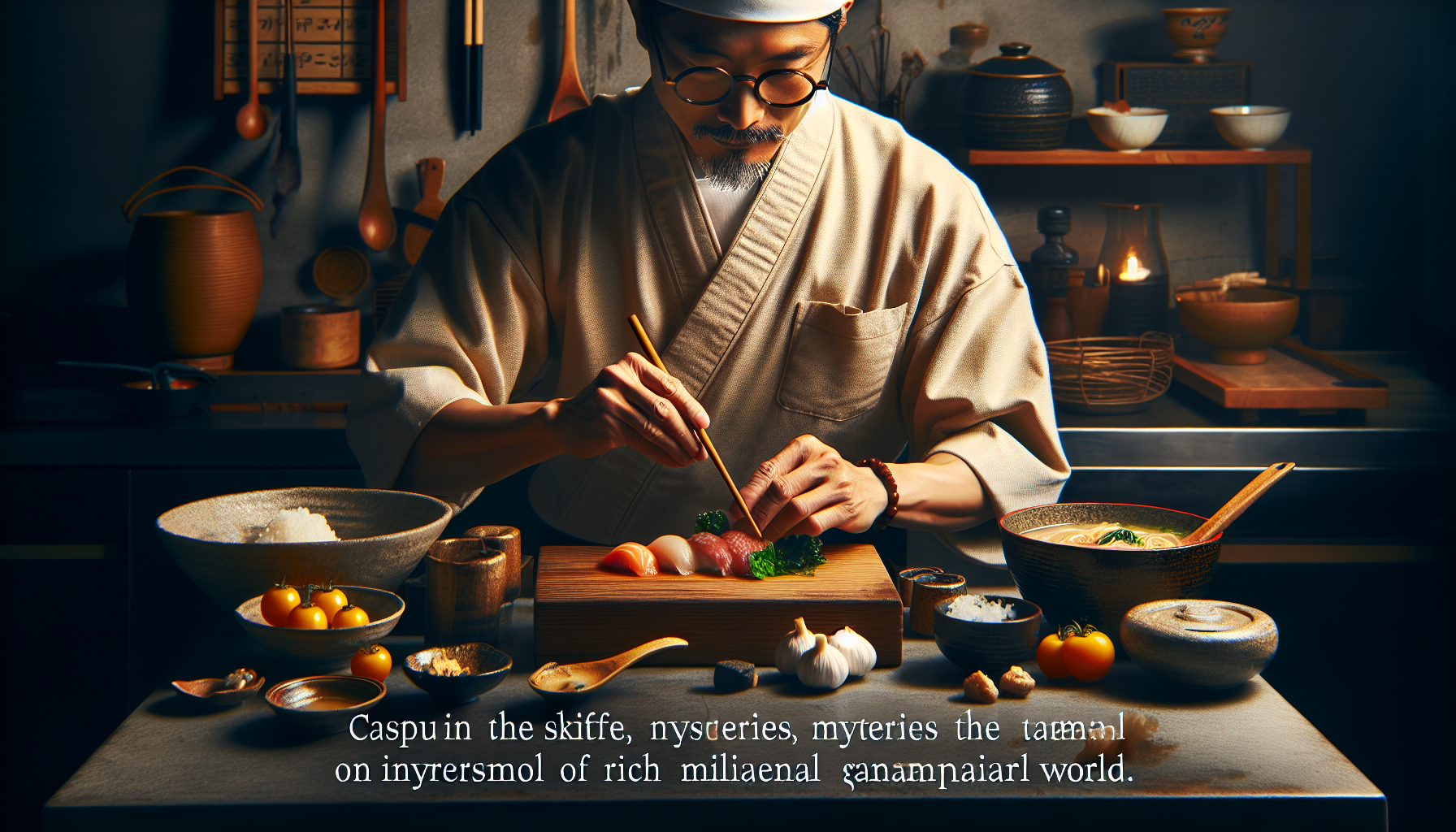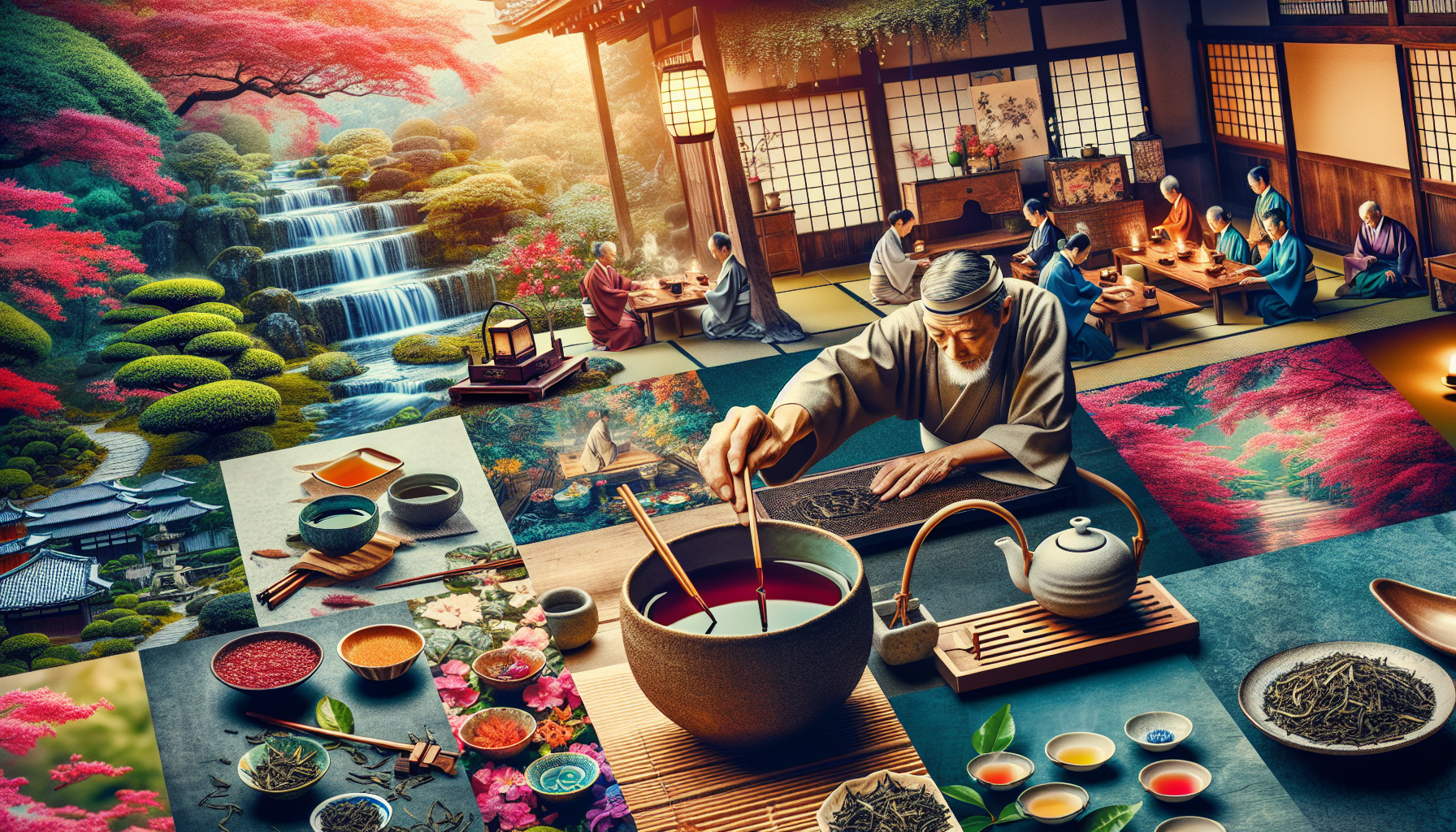Advertisements
Discover the secrets of Japanese cuisine that go far beyond traditional sushi and ramen. Japanese cuisine is known worldwide for its richness of flavors and ancient techniques, which go far beyond what is served in Western restaurants. In this article, we will explore some typical dishes and essential ingredients of Japanese cuisine, revealing a universe of flavors and traditions that will surprise even the most demanding palates.
In addition to the famous sushi and comforting ramen, Japanese cuisine offers a variety of delicious dishes full of history. From the tasty tempura, made with vegetables or seafood fried in a light and crispy batter, to the unique flavor of okonomiyaki, a type of pancake stuffed with ingredients such as cabbage, meat and seafood, Japanese cuisine is a true gastronomic journey.
The secrets of Japanese cuisine go beyond the dishes themselves, including preparation techniques and special ingredients. The use of dashi, a broth made from fish and seaweed, is essential in many Japanese dishes, giving them a unique, umami flavor. In addition, the art of presenting dishes, known as kaiseki, is a tradition that values the harmony of colors, textures and flavors in a meal.
Advertisements
If you are a fan of Japanese cuisine or are looking for new gastronomic experiences, this article is for you. Get ready to discover the secrets and flavors of Japanese cuisine that go far beyond what you already know. Take the opportunity to explore new dishes, ingredients and techniques, and immerse yourself in a universe of tradition and flavor that will delight your senses.
Flavor and tradition: the secrets of Japanese cuisine beyond sushi and ramen
The diversity of Japanese cuisine
Japanese cuisine is much more than sushi and ramen. It is rich in flavors, techniques and traditions that go far beyond what we are used to seeing in Western restaurants. Japanese food is a true art, where ingredients are treated with respect and care, resulting in delicious and visually stunning dishes.
Traditional Japanese dishes
In addition to sushi and ramen, there are several traditional Japanese dishes that deserve to be highlighted. Some examples are tempura, made with breaded and fried vegetables and seafood, sukiyaki, a stew of meat, vegetables and noodles served in an iron pan, and okonomiyaki, a type of Japanese pancake made with cabbage, meat and seafood.
Unique and fresh ingredients
Japanese cuisine is known for its use of fresh, high-quality ingredients. Fish such as tuna, salmon and sardines are essential in Japanese cuisine, as are rice, nori seaweed, sesame, soy sauce and wasabi. In addition, vegetables such as daikon, shiitake and bamboo are also very common in Japanese dishes.
Advertisements
- Fresh fish, such as tuna, salmon and sardines
- High quality rice
- Nori seaweed, sesame, soy sauce and wasabi
- Vegetables such as daikon, shiitake and bamboo
Japanese culinary techniques
Japanese cuisine is also known for its unique and complex culinary techniques. Precisely cutting ingredients, cooking them to perfection, and presenting dishes in an aesthetically pleasing way are fundamental aspects of Japanese cuisine. In addition, respecting the seasonality of food and valuing natural flavors are striking features of Japanese cuisine.

Whether exploring the simplicity and harmony of ingredients or appreciating the complexity of Japanese culinary techniques, Japanese cuisine offers a unique and unforgettable dining experience. Each dish is prepared with meticulous attention to detail, always seeking the perfect balance between flavor, texture and presentation. The philosophy behind Japanese cuisine values the seasonality of ingredients, promoting the use of fresh, local produce that enhances the natural flavor of each dish.
The famous tea ceremony, for example, is a reflection of the Japanese reverence for simplicity and the beauty of the present moment, and this is reflected in the cuisine, where dishes such as sushi, sashimi and tempura convey a unique elegance. Kaiseki cuisine, with its multiple dishes prepared with sophisticated techniques and delicacy, is a perfect example of this search for perfection on the plate.
Another defining aspect of Japanese cuisine is the use of rice as the base for many dishes, a tradition that dates back centuries and continues to be celebrated. The careful preparation of rice, especially for sushi, is a true art form that enhances the dining experience. The diversity of dishes, ranging from the popular ramen and udon to more sophisticated delicacies such as fugu (bullet fish) and unagi (eel), reflects Japan’s vast cultural wealth.
With its diverse range of dishes, fresh ingredients and refined techniques, Japanese cuisine continues to delight people around the world and remains one of the most appreciated and respected gastronomic traditions today. Each meal is an opportunity to immerse yourself in a sensory experience that celebrates both tradition and innovation. 🍣🍱
Conclusion
In short, Japanese cuisine goes far beyond sushi and ramen, revealing a diversity of flavors, techniques and traditions that delight palates around the world. Traditional dishes such as tempura, sukiyaki and okonomiyaki provide a unique gastronomic experience, while fresh, high-quality ingredients such as a variety of fish, rice, nori seaweed and vegetables such as daikon and shiitake ensure the authentic flavor of Japanese cuisine.
Japanese culinary techniques, with many precise cuts, cooking to perfection and aesthetically pleasing presentations, demonstrate the care and dedication of chefs in preparing dishes. Respect for the seasonality of food and the appreciation of natural flavors are also trademarks of Japanese cuisine, which values simplicity and harmony of ingredients.
Therefore, by exploring the secrets of Japanese cuisine beyond sushi and ramen, it is possible to discover a world of flavors, textures and aromas that captivate the senses and enrich the gastronomic experience. Japanese culinary art transcends borders, winning admirers and connoisseurs around the globe, and remaining one of the most appreciated and respected gastronomic traditions in the world.
Japanese cuisine is truly a unique and fascinating experience that goes far beyond what we can imagine. The combination of fresh ingredients, refined culinary techniques and a philosophy that values simplicity and harmony of flavors makes each meal truly special. Exploring the secrets and flavors of Japanese cuisine is like embarking on a sensory journey that allows us to appreciate not only the food, but an entire culture and ancient tradition that continues to delight and inspire people around the world.




